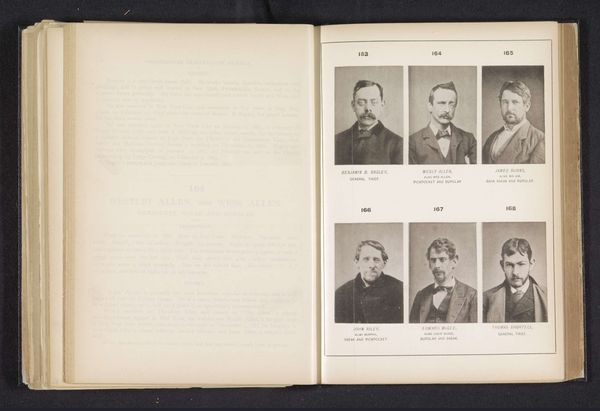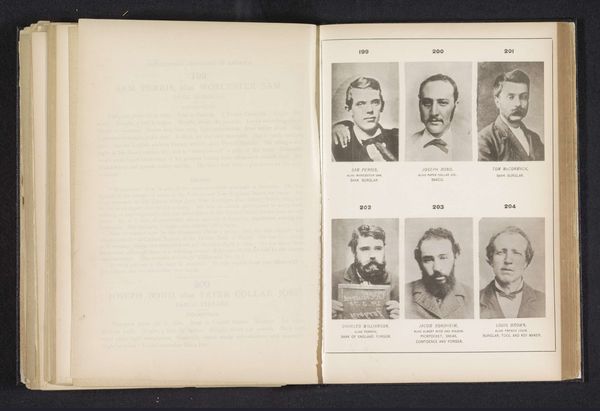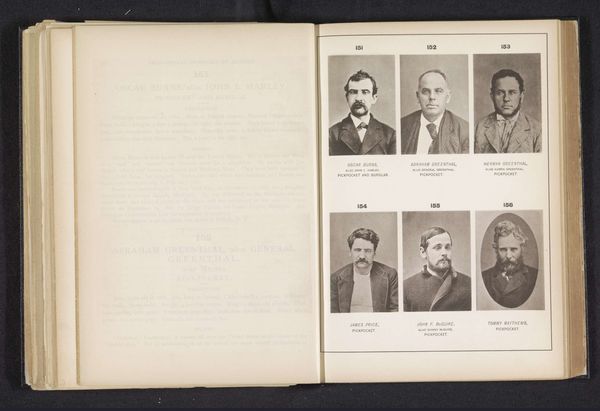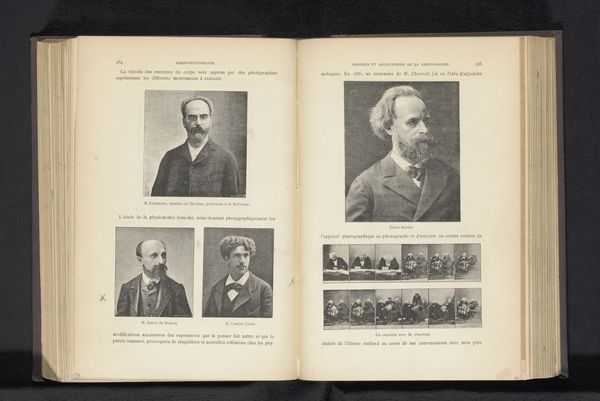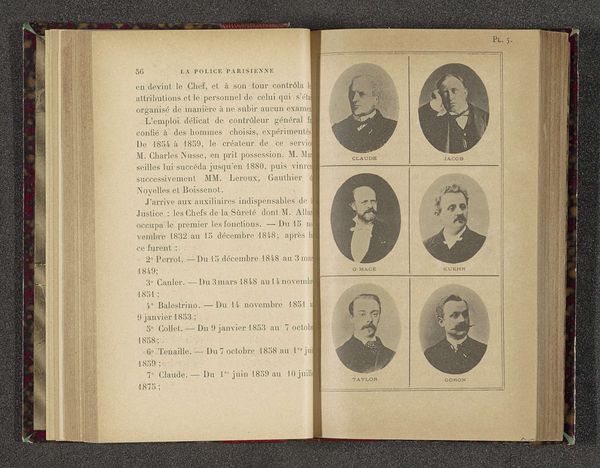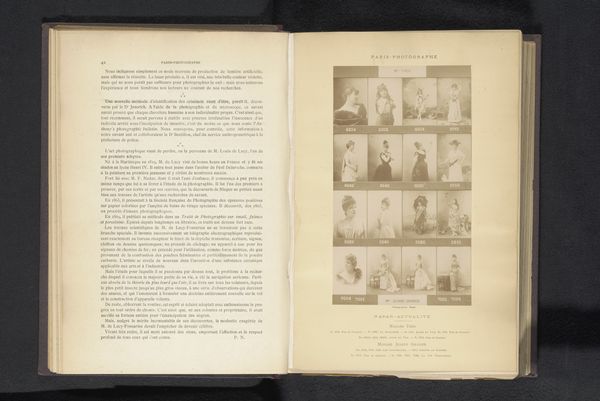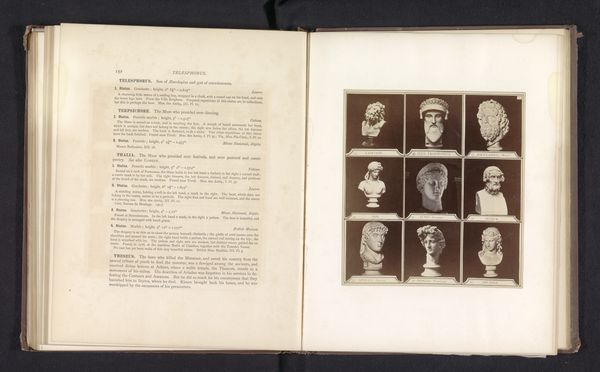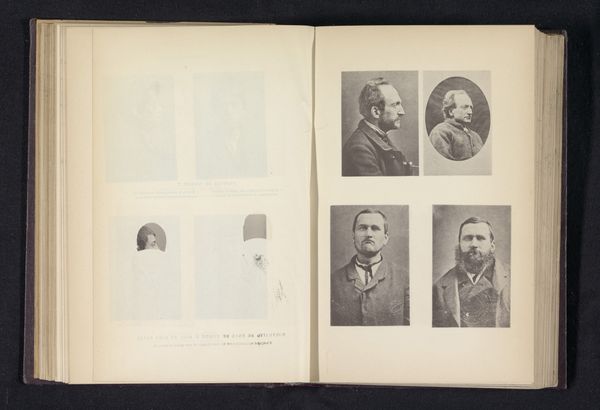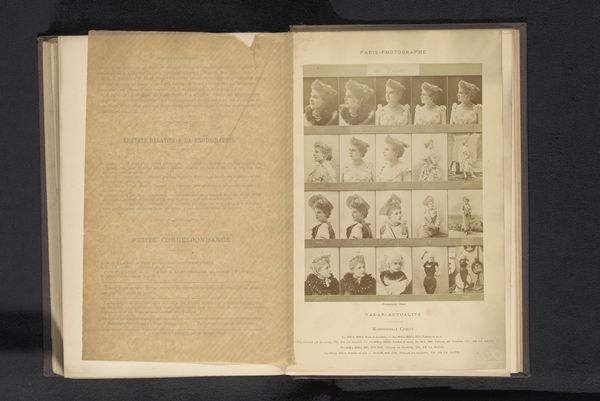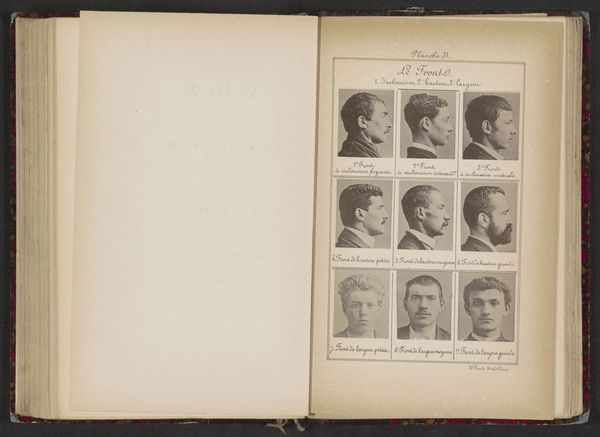
print, photography, albumen-print
#
portrait
# print
#
photography
#
albumen-print
#
realism
Dimensions: height 282 mm, width 196 mm
Copyright: Rijks Museum: Open Domain
Editor: Here we have a spread from a book opened to a page entitled "Zes portretten van hoteldieven," or "Six Portraits of Hotel Thieves," predating 1886. These are albumen prints arranged like a police line-up. There's something unnerving about seeing these men frozen in time, their stories hinted at but ultimately unknown. What strikes you when you look at this? Curator: The arrangement immediately evokes a sense of official documentation, a cataloging of deviance. Consider what photography represented at this time: a claim to truth, a scientific rendering. And here it's deployed to fix a social anxiety. Each man becomes a symbol, stripped of individual identity to represent a larger perceived threat to public order. What do you notice in their faces, or in the spaces between them? Editor: There is something unsettling, though almost… relatable in their expressions? They look like ordinary men caught in an unfortunate situation, even if it is their own fault. Their placement reminds me of baseball cards... Curator: Interesting you mention baseball cards. Yes, there's that element of classification, almost a collecting of types. Consider the caption beneath each image, matter-of-factly labeling them "hotel thief." There is an attempt to categorize and manage a specific anxiety, the idea of disorder threatening a community. Do these faces trigger an association to people of their era, an implicit warning or threat to viewers? Editor: Yes, they are definitely ordinary-looking fellows! It’s easy to forget that mugshots were also considered a form of portraiture back then. I hadn't considered how this could function as social commentary too. Curator: It is a fascinating point that makes me wonder how effective, historically, this method was. How many looky-loos and potential hotel burglars used this 'study guide' for purposes unintended by law? Editor: That’s such a good point! It feels like a cautionary tale, almost with unintended consequences, doesn’t it? Curator: Indeed. It underscores how even supposedly objective visual documents are imbued with complex cultural anxieties and the ever-present potential for subversive interpretation.
Comments
No comments
Be the first to comment and join the conversation on the ultimate creative platform.

